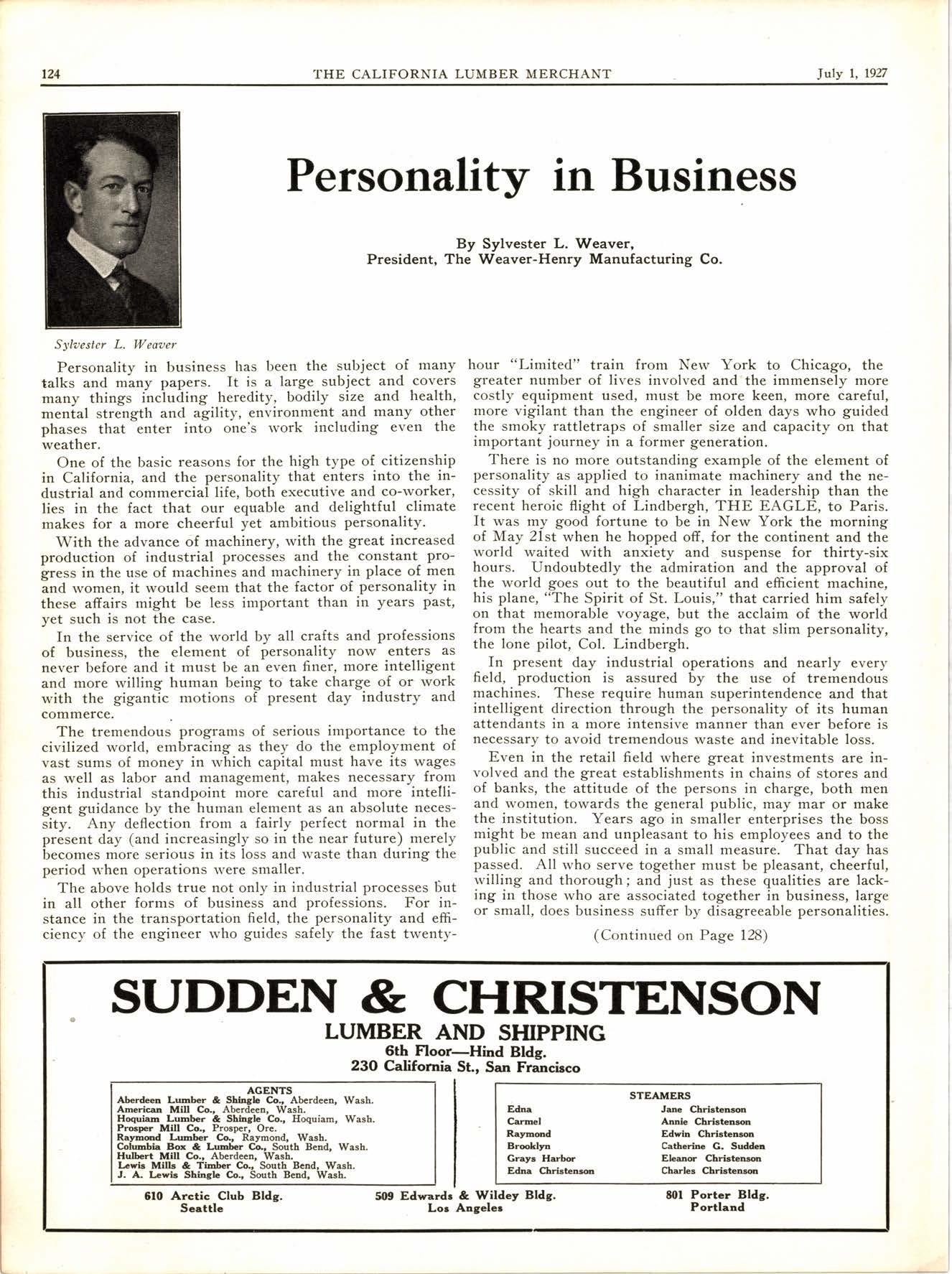
3 minute read
Sugar Pine and Its Distribution
By John Hemphill, Madera Sugar Pine Co., Madera, California
_ By reason of overprbduction, impfoper advertising and the practice of faulty principles of merChandising, the Sugar Prne producers have in recent years absolutely failed to enjoy rvhat is due them, by virtue of the splendid quality of their output. Their light has been as a,candle hidden under a bushel. A realization of the necessity for vigorous sales promotion work and a carefully thought out pl-an for merchandising their product has now dawned upon them, and much greater attention is certain to be given to these matters than they have ever before received.
No one interested in the marketing of Pine lumber can travel through the East without being impressed by two things:
(l) The identity of Sugar Pine has not been definitely established in the eastern markets and its true value is not fully appreciated.
(2) Eastern lumber buyers are very loyal to the wholesalers of their section, and mill-to-consumer plans of merchandising will not prove popular.
Sugar Pin+-A True White Pine
Early settlers in those sections in which Sugar Pine grows noticed that, in drying, a fine powdery substance, sweet to taste, sometimes appears on the surface of Sugar Pine lumber cut from butt logs. Moreover, in deep flre scars, small globules of this white, sweet-tasting, sugary substance sometimes form. Due to this peculiarity of the wood, it was given the local name of "Sugar Pine." Botanically, as well as physically, it is a true White Pine.
Had Sugar Pine been introduced into eastern mdrkets as California's White Pine, it undoubtedly would have been very readily accepted by Eastern users. By reason of its name, it has been to a large extent more or less generally regarded as some strange sort of Pine, differing from the White Pine to which the Easterner is accustomed. That this is the case is not strange when the history of Pine is taken into account.
In the order of its introduction, Pine appeared to the users of lutnber in this country in the following order: New England White Pine, New York and Pennsylvania \,Vhite Pine, Lake States White Pine, Canadian White Pine, and Idaho White Pine.
With the East educated to the idea of White Pine lumber, Sugar Pine producers overlooked a wonderful opportunity in not selling their product as a White Pine. Instead, they permitted Oregon and Washington to appear on the market with a Western Yellow Pine, paraded under the name of Western White Pine, and a similar species of Yellow Pine to be sold from California as California White Pine (Trade Name). Up until very recently the eastern market has not known Sugar Pine as a true White Pine, and generations of the advertising of the virtues of White Pine lumber have been lost to Sugar Pine by reason of the name it chances to bear.
No rvood so completely and satisfactorily supplied the needs of home builders ahd the varied requifements of the trade as the Eastern White Pine (Pinus Strobus). The magnificent forests of White Pine, first exploited in the northeastern states, then gradually westward into the Lake States, are now largely a memory, and it is no lohger possible to take care of the demand for this premier of soft woods. Fortunately, however, nature has proved, on the Pacific Coast, a wood fully measuring up to the standards established by Eastern White Pine, and waiting, not to displace it, but rather to continue it in those markets, and for those uses where soft, easily worked Pine is best.
Sugar Pine (Pinus Lambertiana) belongs to the White Pine group, and botanically and physically closely resembles its eastern relative, the famous White Pine (Pinus Strobus). It has a wood which is soft, straight grained, and equally as durable as the Eastern White Pine. Innumerable examples can be found of split Sugar Pine shake roofs which have withstood the rain and heat for over a half century. Such disintegration in the roof as may be noticed is never due to rot; for the shakes will continue to turn water until wofn away by the attrition of wind and rain.
For pattern purposes, the genuine Eastern White Pine which grew in the region of the Great Lakes, and further East had no equal. It was very soft in texture, so much so, that it has always been called "Cork Pihe." There is now so little of this type of timber from which to produce high-grade pattern stock that it may be c-onsidered as almost extinct. What is available cannot be had at anything like reasonable prices. From the standpoint of the pattern maker, however, there is nothing particularly alarming about this situation, because Sugar Pine timber produces high grade, soft, straight-grained lumber, in every way suited to pattern purposes.
(Continued on Page 114)
Floors
beoutify these hotnes










